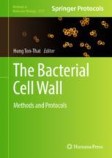Search
Search Results
-
Phytochemical Constituents, Pharmacological Activities, and Human Health
Several active biochemical compounds with pharmacological actives have been identified from the leaf, stem, fruit, and root of M. alba and M. nigra....
-
Aluminum (Al)-induced organic acid exudation in an Al-accumulating species from the Brazilian savanna
Key messageStyrax camporum , an Al-accumulating species from the Cerrado, seems to rely on the exudation of citric and oxalic acids to avoid...

-
γ-Aminobutyric acid (GABA) priming alleviates acid-aluminum toxicity to roots of cree** bentgrass via enhancements in antioxidant defense and organic metabolites remodeling
Main conclusionγ-Aminobutyric acid alleviates acid-aluminum toxicity to roots associated with enhanced antioxidant metabolism as well as accumulation...

-
Immunoprecipitation
Immunoprecipitation (IP) is an immunological technique in which antibodies are used to pull down a target protein from a mixed solution. This happens...
-
Role of salicylic acid in alleviating the inhibition of root elongation by suppressing ethylene emission in rice under Al toxicity conditions
Salicylic acid (SA) is the phytohormone responsible for the regulation of growth and response to environmental stress in plants. In the present...

-
OsAlR3 regulates aluminum tolerance through promoting the secretion of organic acids and the expression of antioxidant genes in rice
In acidic soils, aluminum (Al) toxicity inhibits the growth and development of plant roots and affects nutrient and water absorption, leading to...

-
Low levels of Al stimulate the aboveground growth of Davidia involucrata saplings
Davidia involucrata is a woody perennial and the only living species in the Genus Davidia . It is native to southern China where it holds cultural and...

-
The LRR receptor-like kinase ALR1 is a plant aluminum ion sensor
Plant survival requires an ability to adapt to differing concentrations of nutrient and toxic soil ions, yet ion sensors and associated signaling...

-
Does aluminum induce high proline concentration in Pinus sylvestris, an Al-tolerant species?
Proline is an amino acid acting as an osmoprotector in plants, as it reduces osmotic potential and enhances plant water uptake, especially under...

-
Physiological and transcriptional regulation in Taxodium hybrid ‘Zhongshanshan’ leaves in acclimation to prolonged partial submergence
Main conclusionTaxodium 703 leaves activate fermentation, amino acids metabolism and ROS detoxification, and reduce TCA cycle and ABA biosynthesis...

-
Endophytic Bacillus sp. R1 and Its Roles in Assisting Phytoremediation and Alleviating the Toxicity of Aluminum Combined Phenanthrene Contaminations in Brassica napus
The release of organic and inorganic contaminants into soil from industry, agriculture, and urbanization has become a major issue of international...

-
Type I Lipoteichoic Acid (LTA) Purification by Hydrophobic Interaction Chromatography and Structural Analysis by 2D Nuclear Magnetic Resonance (NMR) Spectroscopy
Type I lipoteichoic acid (LTA) is a glycerol phosphate polymer found in the cell envelope of diverse Gram-positive bacteria. The glycerol phosphate...
-
Aluminum-Tolerant Wheat Genotype Changes Root Microbial Taxa and Nitrogen Uptake According to Soil pH Levels and Nitrogen Rates
Nitrogen (N) fertilizer induces soil acidification and aggravates aluminum (Al) toxicity in acid soil, while Al toxicity inhibits root growth and...

-
Genome analysis of a newly isolated Bacillus velezensis-YW01 for biodegrading acetaldehyde
Acetaldehyde (AL), a primary carcinogen, not only pollutes the environment, but also endangers human health after drinking alcohol. Here a promising...

-
Micromorphological and Physiological Responses of Two Contrasting Centipedegrass (Eremochloa ophiuroides (Munro) Hack.) Genotypes in Response to Aluminum Toxicity
To explore micromorphological and physiological responses of two contrasting genotypes of centipedegrass exposed to high-level Al 3+ and identify the...

-
l-Geneserine
This alkaloid was extracted, along with l-physostigmine, with cold ether from pulverised Calabar beans which were treated with sodium bicarbonate, in...
-
Assessing the bioaccessibility of aluminum in an acidic soil with the diffusive gradients in thin films (DGT) and DIFS
AimTo assess the bioaccessibility of aluminum (Al) by DGT, and to clarify the main factors affecting Al plant accessibility.
MethodsAn acidic soil...

-
Assessing the effectiveness of the TaMATE1B and TaALMT1 genes to enhance the Al3+ tolerance of durum wheat (Triticum turgidum) grown under controlled conditions and in the field
PurposeDurum wheat is sensitive of acid soils because it lacks effective genes for Al 3+ tolerance. Previous research showed introgression of the TaMATE1B...

-
Microelements, Fatty Acid Profile, and Selected Biomarkers in Grass Carp (Ctenopharyngodon idella) Muscle Tissue: Seasonal Variations and Health Risk Assessment
The study assesses associations between microelement levels, fatty acid composition, and oxidative stress markers in grass carp muscle in the summer...

-
Influence of aluminum at low pH on the rhizosphere processes of Masson pine (Pinus massoniana Lamb)
Trees in general are very tolerant of aluminum (Al, mainly Al 3+ at pH ≦ 5.0), and the small effects seen in the contaminated soils may mislead people...

